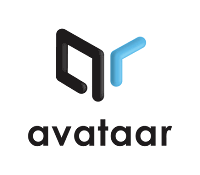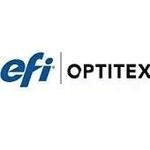Description

Adobe Creative Cloud

Avataar
Comprehensive Overview: Adobe Creative Cloud vs Avataar
Adobe Creative Cloud is a comprehensive suite of software applications and services designed primarily for professionals in the creative industries. This includes graphic design, video editing, web development, photography, and more. Each tool within the Creative Cloud offers specialized features catering to different creative workflows. Here's a detailed overview:
a) Primary Functions and Target Markets:
-
Primary Functions:
- Graphic Design: Adobe Photoshop, Illustrator, and InDesign serve as the cornerstone tools for graphic designers, allowing for sophisticated image editing, vector graphics creation, and desktop publishing.
- Video Editing and Production: Adobe Premiere Pro and After Effects are industry-standard for video editing, providing powerful tools for video production, motion graphics, and visual effects.
- Photography: Adobe Lightroom and Photoshop are essential for photographers, offering photo editing, organization, and cloud-based workflow solutions.
- Web and UX Design: Adobe XD offers tools for UX/UI design and prototyping, while Dreamweaver provides web development solutions.
- Digital Art and Illustration: Adobe Fresco and Illustrator cater to digital painting and illustration needs, offering a blend of raster and vector capabilities.
- Document Management and Publishing: Adobe Acrobat and InDesign are critical for document management, PDF editing, and professional publishing.
-
Target Markets:
- Creative Professionals: Artists, designers, photographers, and videographers who require advanced tools for content creation.
- Marketing and Advertising Agencies: Companies focused on brand development, advertising, and digital marketing campaigns.
- Educational Institutions: Schools and universities use Creative Cloud for teaching design and digital communication skills.
- Enterprises: Businesses needing robust solutions for media creation, digital asset management, and corporate communications.
b) Market Share and User Base:
Adobe Creative Cloud is a leader in the creative software market. According to industry reports and Adobe's financial disclosures, Creative Cloud has a substantial market share, dominating sectors like graphic design, video editing, and digital publishing. Its user base ranges from individual freelancers to large corporations and spans various industries, reflecting its flexibility and comprehensive nature.
Compared to competitors like CorelDRAW Suite, Affinity by Serif, and other niche products, Adobe Creative Cloud maintains a significant advantage due to its extensive suite of applications, established brand, and seamless integration across different creative disciplines.
c) Key Differentiating Factors:
-
Integration and Ecosystem: One of Adobe Creative Cloud's significant strengths is its seamless integration among its apps and with third-party plugins. Users can easily transfer files between Photoshop, Illustrator, and Premiere Pro, streamlining workflows.
-
Innovative Features: Adobe frequently updates Creative Cloud applications with cutting-edge features, such as Adobe Sensei, their artificial intelligence and machine learning framework, which enhances productivity and creativity.
-
Cloud Services and Collaboration: Creative Cloud offers cloud-based services, including Adobe Creative Cloud Libraries and Adobe Stock, allowing for real-time collaboration and access to assets from any location.
-
Industry Standard: Many of the Creative Cloud applications, like Photoshop and Premiere Pro, are considered industry standards, which translates to adigital asset exchange and collaboration easier across different stakeholders engaging in creative projects.
-
Comprehensive Learning Resources: Adobe provides extensive documentation, tutorials, and community forums, which are vital for learning and mastering applications.
Overall, Adobe Creative Cloud's dominance in the creative software industry is attributed to its comprehensive coverage of creative needs, robust integration capabilities, and commitment to innovation and customer support.
Contact Info

Year founded :
Not Available
Not Available
Not Available
Not Available
Not Available

Year founded :
2014
+91(487)870-1054
Not Available
India
http://www.linkedin.com/company/avataar-
Feature Similarity Breakdown: Adobe Creative Cloud, Avataar
Adobe Creative Cloud and Avataar are distinct products catering to creative professionals, but they share some overlapping features, particularly in graphic design and content creation. Here's a breakdown of their feature similarities and differences:
a) Core Features in Common
-
Design and Creativity Tools:
- Both Adobe Creative Cloud and Avataar offer a suite of design tools that allow users to create and edit graphics, images, videos, and 3D content.
-
Cloud-Based Services:
- Adobe Creative Cloud is known for its all-encompassing cloud-based services that allow users to access and synchronize their projects across devices. Avataar, while primarily focusing on 3D and AR content, also supports cloud functionalities for easy sharing and collaboration.
-
Integration Capabilities:
- Both platforms provide integration possibilities with other software and tools to enhance functionality and streamline workflows.
-
Collaboration Features:
- Both offer collaboration tools that enable multiple users to work on a project simultaneously, though the extent and focus (e.g., on 3D/AR vs. graphic design) may vary.
b) User Interface Comparison
-
Adobe Creative Cloud:
- The interface of Adobe Creative Cloud is tailored for professionals with a layout that is both complex and robust, offering numerous tools and features within each application. Its interface is consistent across its numerous applications, like Photoshop, Illustrator, and Premiere Pro, making it easier for users familiar with one product to use others.
-
Avataar:
- Avataar focuses primarily on 3D and augmented reality experiences. Its user interface is likely to be more streamlined towards 3D design and visualization, prioritizing ease of use for creating and managing AR experiences. The UI tends to be more modern and may focus on drag-and-drop functionality to simplify 3D model manipulation.
c) Unique Features
-
Adobe Creative Cloud:
- Extensive Application Suite: Offers a wide range of applications for different creative tasks, from graphic design (Photoshop, Illustrator) to video editing (Premiere Pro) and more.
- Adobe Sensei: Integrates AI-driven features to enhance productivity, automate repetitive tasks, and improve creative outputs through intelligent optimizations.
- Comprehensive Typography and Layout Tools: Advanced typography tools especially in products like InDesign.
- Access to Adobe Stock: Seamless integration with Adobe's extensive stock photo and asset library.
-
Avataar:
- 3D & AR Specialization: Primarily focuses on enabling 3D and AR experiences, providing tools that make creating immersive experiences more intuitive and accessible.
- AR-Ready Content Delivery: Emphasizes real-time publishing of AR experiences suitable for e-commerce and marketing.
- Simplified Workflow for AR: Offers processes specifically designed for converting existing 2D content into 3D, making AR more accessible to non-specialists.
In summary, while both Adobe Creative Cloud and Avataar offer tools for digital content creation, Adobe provides a comprehensive suite for a wide range of creative endeavors. In contrast, Avataar specializes in 3D modeling and AR, making it particularly potent for industries that benefit from immersive content, such as retail or marketing. Each has its unique strengths based on intended use cases.
Features

Cloud Services and Collaboration
Video and Motion Graphics
Design and Layout Tools
Web and UX Design
Photography

User Engagement Tools
Collaboration Features
Data Management
Customization and Flexibility
Security
Best Fit Use Cases: Adobe Creative Cloud, Avataar
Adobe Creative Cloud and Avataar cater to different needs and use cases, offering distinct capabilities suited to various business types and projects. Here’s a detailed look at how each product best fits different scenarios:
Adobe Creative Cloud
a) Best Fit Use Cases
-
Design and Media Companies: Adobe Creative Cloud is an optimal choice for businesses involved in graphic design, video editing, photography, and illustration due to its comprehensive suite of applications like Photoshop, Illustrator, Premiere Pro, and After Effects.
-
Marketing and Advertising Agencies: For creating high-quality marketing materials, advertising content, and social media graphics, the tools in Adobe Creative Cloud provide versatility and professional-grade outputs.
-
Publishing and Print Media: Publishers benefit from tools such as InDesign for creating page layouts and publication designs, making Adobe Creative Cloud ideal for magazine, book, and newspaper industries.
-
Educational Institutions: Schools and universities that offer courses in digital arts, media studies, and communications will find Adobe's products invaluable for teaching creative skills and software proficiency.
-
Corporates with In-house Design Teams: Corporates that maintain an in-house team for branding, product design, and content creation can utilize Adobe Creative Cloud for professional and consistent creative production.
d) Industry Verticals and Company Sizes
- Verticals: Suitable for creative industries, marketing, education, entertainment, and corporate communication.
- Company Sizes: From freelancers to large enterprises, the scalability and range of Adobe's offerings fit small businesses that want intuitive tools and large companies requiring comprehensive solutions with team collaboration capabilities.
Avataar
b) Best Fit Use Cases
-
E-commerce and Retail: Avataar, being expert in 3D and augmented reality (AR), excels for businesses looking to enhance their online shopping experiences by integrating AR and 3D product visualizations, allowing customers to view lifelike product renditions.
-
Real Estate and Interior Design: For showcasing properties, floor plans, and interior spaces in immersive 3D or AR, Avataar can provide potential buyers or clients with a virtual yet tangible experience.
-
Furniture and Home Decor: Industries related to furniture design can benefit from Avataar's capabilities by offering an AR experience allowing customers to visualize how products would look in their own space.
-
Automotive Industry: Car manufacturers and dealers can use AR to provide a virtual showroom experience, enabling potential buyers to explore the features and specifications of vehicles in a realistic manner.
d) Industry Verticals and Company Sizes
- Verticals: E-commerce, real estate, automotive, furniture, and interior design are key sectors that Avataar serves, emphasizing industries that benefit from enhanced visual customer engagement.
- Company Sizes: More suited for mid-sized to large businesses with a customer-centric focus on transforming digital engagement through innovative technologies like AR and 3D visualization.
In summary, Adobe Creative Cloud is best for businesses focused on professional content creation across various media formats, while Avataar is suited for industries where product visualization can enhance customer experiences. Both products serve different verticals and can cater to multiple company sizes, but their core strengths lie in creativity for Adobe and immersive visualization for Avataar.
Pricing

Pricing Not Available

Pricing Not Available
Metrics History
Metrics History
Comparing teamSize across companies
Conclusion & Final Verdict: Adobe Creative Cloud vs Avataar
Conclusion and Final Verdict: Adobe Creative Cloud vs. Avataar
When comparing Adobe Creative Cloud and Avataar, it's essential to consider the unique offerings, value propositions, and user requirements associated with each platform. Both have their strengths and cater to different aspects of creative needs. Here's an analysis to help determine the best value, along with pros and cons, and recommendations for prospective users.
a) Best Overall Value
Adobe Creative Cloud offers the best overall value when considering a broad range of creative needs. Its comprehensive suite includes industry-standard tools for graphic design, video editing, web development, photography, and more. The integration across apps like Photoshop, Illustrator, Premiere Pro, and After Effects makes it ideal for professionals who need versatility and depth in creative work.
b) Pros and Cons
Adobe Creative Cloud:
- Pros:
- Comprehensive Suite: Access to over 20 apps and services, making it a one-stop solution for all creative needs.
- Industry Standard: Trusted by professionals globally in various creative industries, offering a level of familiarity and reliability.
- Advanced Features: Cutting-edge tools and technologies like Adobe Sensei for AI-driven enhancements.
- Seamless Integration: Excellent integration between apps and additional services, facilitating efficient workflows.
- Cons:
- Cost: Subscription-based model can be expensive, especially for individual users or small businesses.
- Learning Curve: Complex applications can require significant time investment to master.
- Resource Intensive: Requires powerful hardware to run smoothly, which can be a limitation for some users.
Avataar:
-
Pros:
- Specialization: Avataar focuses on creating immersive augmented reality (AR) experiences, making it ideal for businesses looking to enhance customer engagement.
- Innovation: Known for incorporating cutting-edge AR technology that can transform consumer interactions.
- Ease of Use: Typically designed to be more user-friendly with a focus on specific applications rather than a comprehensive suite.
-
Cons:
- Limited Scope: Primarily focused on AR and does not cover the breadth of creative tools like Adobe Creative Cloud.
- Niche Market: Best suited for businesses or creators specializing in or requiring AR, limiting its general appeal.
- Dependence on External Platforms: Requires integration with existing platforms and may not offer standalone value.
c) Recommendations for Users
-
For General Creators and Professionals: If your work spans multiple disciplines (e.g., graphic design, video editing, digital marketing), Adobe Creative Cloud provides a versatile and comprehensive suite of tools that meet diverse creative needs. It's the preferred choice for professionals seeking depth and breadth in their toolkit.
-
For AR Specialists and Businesses: If your focus is specifically on leveraging AR technologies for marketing, customer engagement, or product visualization, Avataar could be a better fit. Its specialized focus on AR can provide innovative solutions for enhancing virtual and real-world interactions.
-
Budget Considerations: Consider the total cost of ownership. Adobe’s subscription model might add up over time, whereas Avataar might offer competitive pricing depending on usage and business needs.
-
Trial and Evaluation: Both platforms often offer trial periods or demonstrations. Utilize these opportunities to assess which platform aligns best with your specific needs and skill levels.
In summary, the choice between Adobe Creative Cloud and Avataar depends on the breadth of creative needs versus the depth of AR specialization. Evaluate your specific requirements, workflow preferences, and budget constraints to make the best-informed decision.
Add to compare
Add similar companies




